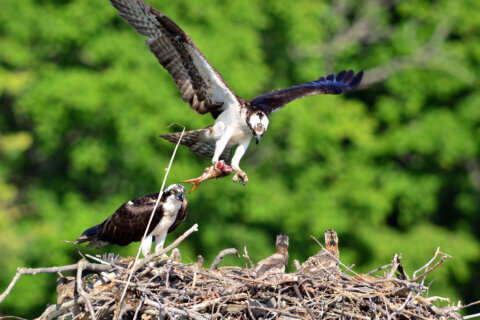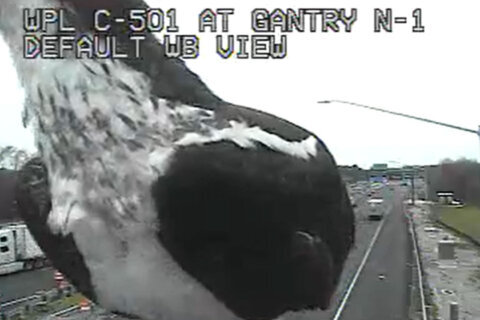As the weather warms up, thousands of mating ospreys are headed back to the Chesapeake Bay from their winter homes in Central and South America.
For the last 10 years, the Baltimore Gas and Electric Company has promoted a program that protects returning osprey and prevents service disruptions.
The Osprey Watch program calls for customers to let them know if they see an osprey nest and email the company so crews can come out and deal with.
Ospreys love building their nests on top of utility poles, which poses a danger to the birds while raising the risk of interruptions to electric service.
Here’s how you can help: When you see an osprey nest on BGE equipment, report the location of the osprey nest by emailing the following information to ospreywatch@bge.com:
- The pole number, located on a placard near eye level on the pole (only if the pole is easily accessible)
- The nearest address to the pole and photos of the pole taken from different perspectives (if the pole is not easily accessible)
When BGE receives a report of a nest, crews follow all federal and local wildlife regulations while assessing whether the nest is inhabited.
The nest is removed if no birds or eggs are present and a deterrent is placed on the top of the pole to dissuade the birds from building another nest. In some cases, BGE installs a new, safe platform specifically for the ospreys to build their nests nearby.
If the nest is inhabited, crews install rubber insulation on wires and other equipment to shield the birds and protect the equipment.
The most impacted areas are located along the Chesapeake Bay and include Havre de Grace, near Martin State Airport, south Baltimore, south of Annapolis, and Shady Side to Deale in Anne Arundel County.
Get breaking news and daily headlines delivered to your email inbox by signing up here.
© 2025 WTOP. All Rights Reserved. This website is not intended for users located within the European Economic Area.






